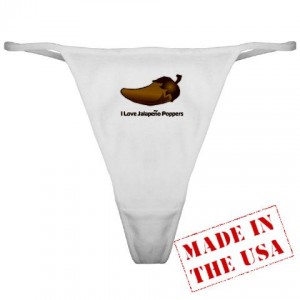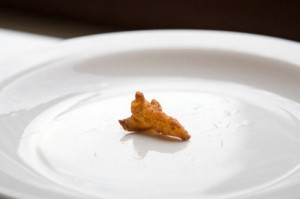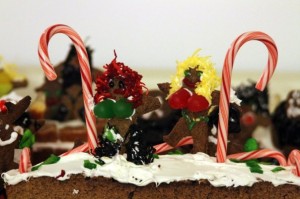Three-dimensional food printing may be the ultimate in custom cuisine. In case you haven’t already heard, science and industry love 3-D printers. Instead of laying down ink on a piece of paper like their special-needs 2-D cousins, three-dimensional printers zap layers of other substances on top of one another to sculpt an actual object. Usually you design something on a computer, “print” it, and the printer makes a resin model for you to play with.
Cornell Creative Machine Labs has taken that idea into the world of food. I wasn’t too surprised someone would do this, seeing as how last year I made my own gingerbread strip club for Christmas.
They use a process called “solid freeform fabrication” which squeezes material out of a syringe and layers it into lines that make up the 3-D object. Only instead of ink or resin, neither of which tastes good, CCML used things like chocolate. The CCML food printers use electronic blueprints called FabApps. The machine prints food line-by-line using multiple cartridges. Foods that can’t be readily extruded from a syringe such as meats and vegetables are ground and mixed with other liquids to make other inks. Their latest 3-D food printer can make little space shuttle-shaped scallop nuggets, or cakes and cookies with edible messages in them. It will even make a solid hamburger patty with layers of ketchup and mustard embedded inside.
Using corn masa dough, the lab team along with Chef David Arnold printed a new form of corn chip in the shape of a flower that could be deep fried evenly. “If it were solid you would burn the outside before the inside was fried,” says Jeffrey Ian Lipton, the head of the CCML project. “By making it porous we can deep fry the whole thing at the same time. Therefore we can make much larger objects to deep fry.”
The Cornell group on the Fab@Home project has teamed up with the French Culinary Institute to create new foods and different forms of existing foods. Lipton believes that stochastic printing and food printing will open an entirely new creative world for chefs, letting them prototype signature dishes almost as fast as they can be dreamed up.
Now apply that mad science to the world of hot-n-spicy. There’s no law which says one of those syringes can’t be firing capsaicin. Imagine print-fabricating your own food with a fully customizable heat level that you can tailor with machine precision. How about edible chopsticks to go with your spicy Szechuan, or a burrito with a hot sauce tattoo of your logo imprinted on the tortilla? You could also make something with alternating layers of spice and milk fats for compartmentalized kick in each bite.

For me, that means I can finally launch that line of edible jalapeno-shaped banana hammocks like I've always wanted. Live the dream!
Better yet, you could get cracking on your own ideas and tell us about them. Essential Dynamics, a tech startup in New York, plans to bring out a commercial version of the 3-D food printer that will retail for $1,000 initially. You can also build one yourself. A full set of instructions and parts listings for making a 3-D printer can be found on the Fab@Home site. Maybe I can talk Dave and Lois into letting me build one…
Latest posts by Mark Masker (see all)
- 2024 Scovie Awards Call for Entries - 07/07/2023
- 2024 Scovie Awards Early Bird Special: 3 Days Left - 06/29/2023
- 2024 Scovie Awards Early Bird Deadline Looms - 06/25/2023









